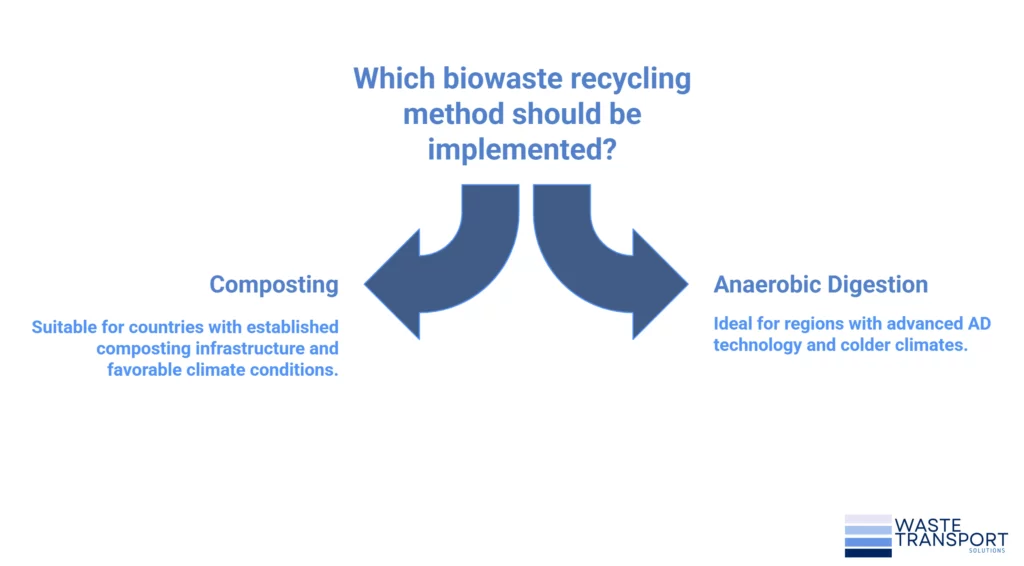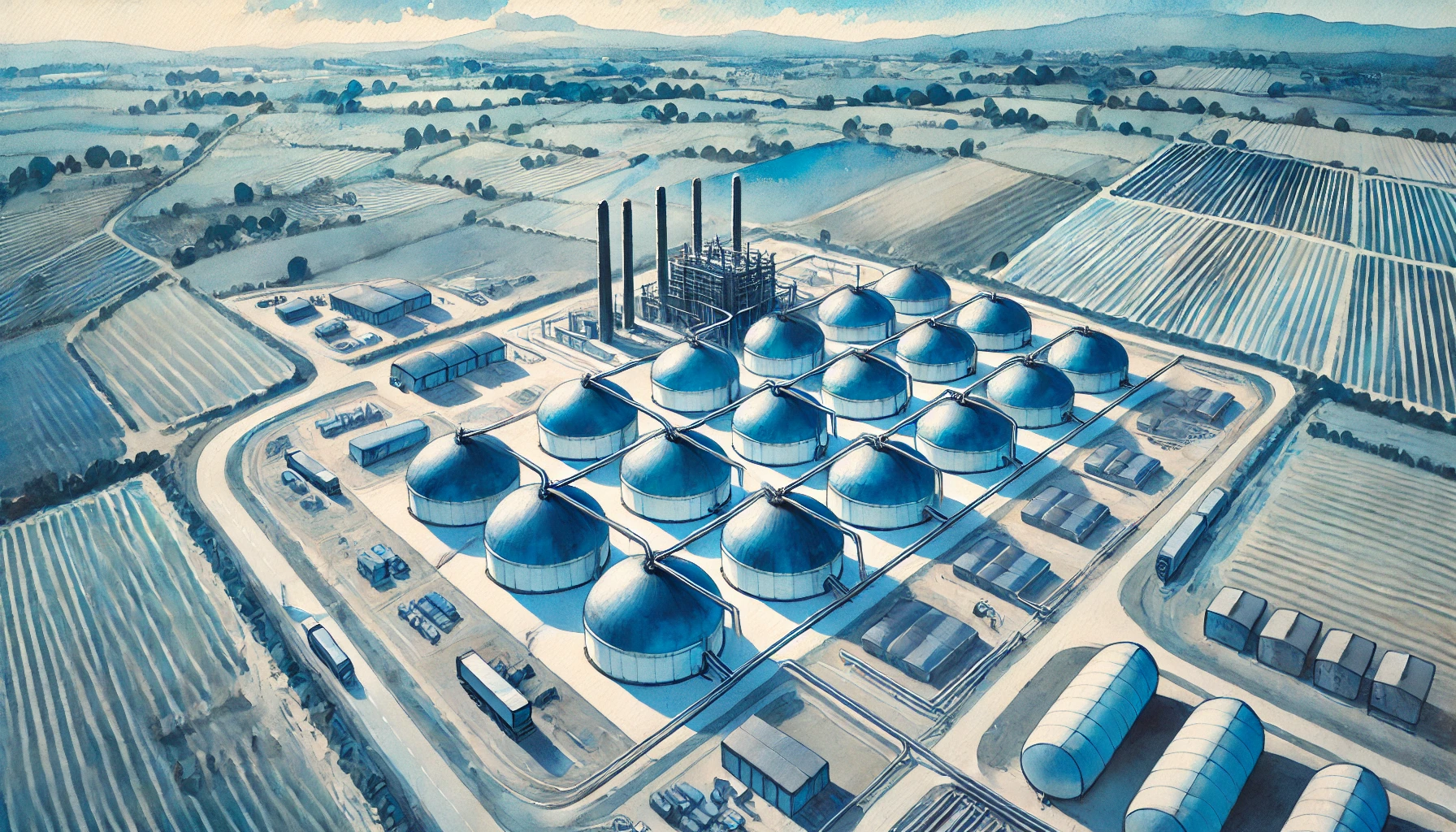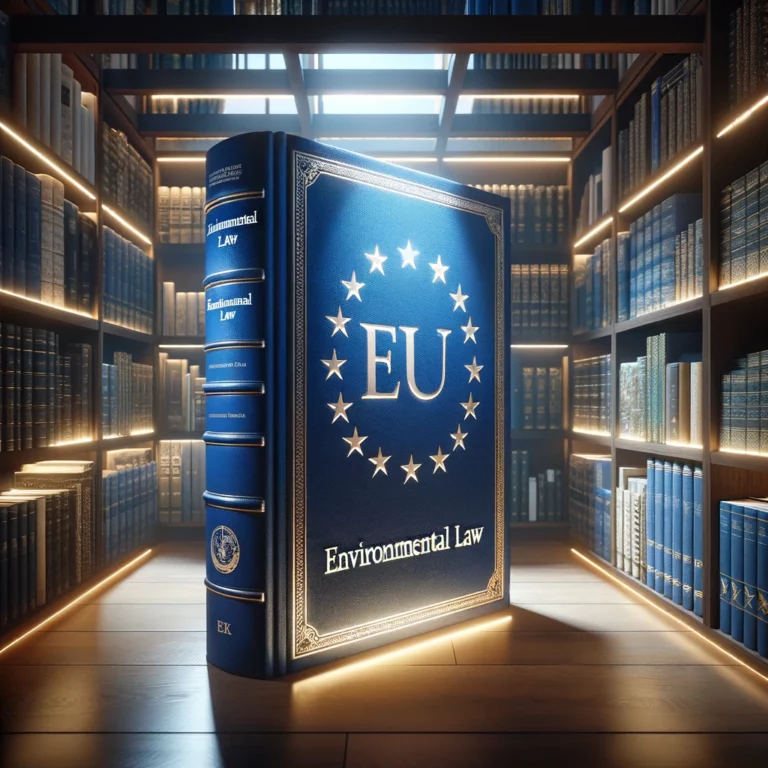Biowaste recycling: here’s what you need to know
Biowaste accounts for 30–50% of Europe’s municipal solid waste, making it a major stream with untapped potential. While in the past much of this biodegradable waste ended up in landfills or incinerators, the EU’s growing focus on sustainability has placed biowaste at the core of circular economy strategies. Properly managed, biowaste offers multiple benefits: it can be transformed into compost or renewable energy, reduce greenhouse gas emissions, and help restore degraded soils across Europe.
Do you need help with waste management? Contact us:
Yet, despite the potential, the continent still faces challenges: uneven infrastructure, fragmented policies, and insufficient public engagement. Understanding how biowaste is managed and recycled—and what lies ahead—is critical for businesses, municipalities, and industries aiming to comply with regulations and harness the opportunities in this evolving sector.
Legal framework: EU policies driving biowaste recycling
Waste Framework Directive (2008/98/EC)
This foundational EU directive introduced the waste hierarchy, placing recycling above disposal. It mandates separate biowaste collection across all Member States starting January 1, 2024, and favors composting and anaerobic digestion (AD) over landfill or incineration.
Circular Economy Action Plan
Building on climate goals and the UN Sustainable Development Goals (SDGs), this plan targets a 50% reduction in food waste by 2030. It emphasizes biowaste as a vehicle for nutrient recovery and soil health restoration, promoting outputs like compost and digestate as replacements for synthetic fertilizers.
How biowaste is recycled: main processing methods

Composting (Aerobic Decomposition)
Used extensively in countries like Italy, Austria, and Germany, composting breaks down organic material in oxygen-rich conditions to produce a stable, soil-enriching compost. This method is well-suited for community-level or industrial-scale operations, depending on local infrastructure.
High-quality compost requires clean feedstock—which means low contamination from plastics and non-organics. When quality is ensured, compost is widely used in agriculture, landscaping, and land rehabilitation.
Anaerobic digestion (AD)
Ideal when energy recovery is a goal, AD processes organic material in the absence of oxygen, yielding biogas (usable as fuel or converted to biomethane) and digestate, a nutrient-rich fertilizer. Northern European countries, especially the Nordics, lean heavily on AD due to its dual energy and recycling benefits.
Mechanical-biological treatment (MBT)
Used where separate collection is incomplete, MBT systems attempt to recover biowaste from mixed municipal waste. However, they generate lower quality compost or digestate due to high contamination, making them a fallback option, not a best practice.
Biowaste recycling – performance examples by country
Across Europe, biowaste recycling performance varies widely by country. Austria and Germany lead the way with high collection rates supported by well-developed composting and anaerobic digestion (AD) infrastructure. Italy has seen rapid growth in both AD and composting facilities, reflecting a strong national push toward circular waste practices. France shows moderate progress—its infrastructure is expanding, and the country has set ambitious policy goals, but implementation still lags behind the frontrunners.
In contrast, Poland and much of Southern Europe continue to struggle with uneven collection systems and limited treatment capacity, hindering large-scale biowaste recovery. Meanwhile, Nordic countries boast advanced AD technology and efficient processing systems, although the use of composted material in agriculture remains less common compared to their Central European counterparts.
Challenges facing the biowaste sector
Despite legal backing and technological advances, several barriers limit the scalability and efficiency of biowaste recycling:
- Infrastructure gaps: Eastern and Southern Europe often lack composting and AD facilities, hampering progress despite legal mandates.
- Policy fragmentation: Different standards for compost and digestate usage across Member States hinder cross-border markets and investment.
- High operational costs: Separate collection, feedstock sorting, and contamination control demand significant investment.
- Plastic contamination: Still a leading cause of low-quality outputs; overcoming this requires both technological filtering and citizen education.
- Public awareness: Participation in biowaste separation is inconsistent. National campaigns and digital solutions (smart bins, traceability apps) are starting to address this.
Innovation and market trends in biowaste recycling
- Smart collection: Technologies like weight-based billing, contamination detection, and app-based tracking are enhancing efficiency.
- Biorefineries: Converting biowaste into bio-based chemicals and bioplastics represents a promising frontier.
- Soil health legislation (upcoming): Will likely mandate compost use in degraded soils, increasing demand and improving market conditions.
How Waste Transport Solutions can help
Navigating the legal, logistical, and technical complexities of biowaste management can be overwhelming. As a part of the Ekologistyka24 Group, Waste Transport Solutions offers more than a decade of experience in supporting European companies’ waste management. In case of biowaste we can help with:
- Biowaste transport in full compliance with EU and national laws.
- Recycling solutions, including partnerships with certified composters and AD plants across Europe.
- Consulting support for companies seeking to optimize their waste streams and reduce environmental impact.
Whether you’re a municipality, food manufacturer, retailer, or recycling firm, we’re your strategic partner in turning biowaste into a sustainable resource. Give us a call or write us a message.
Frequently asked questions regarding biowaste management
Regulations & Policy
Yes—under the revised Waste Framework Directive, all EU Member States must implement separate collection of biowaste (both food and garden waste) since January 1, 2024, aiming to meet the 65% municipal waste recycling target by 2035.
The two primary recycling methods are aerobic composting (most common) and anaerobic digestion (AD), which produces biogas; many countries use a combination—AD followed by composting digestate.
Europe generates ~118–138 million t of biowaste annually, but only ~40 Mt (about 17% of municipal waste) is processed into compost or digestate. Overall, less than 26% of food waste is separately collected.
Yes. Companies often need proof of recycling or recovery, particularly for sustainability reporting, ESG frameworks, and to comply with local or cross-border waste regulations. This may include certificates of treatment, transport records, and traceability documentation from authorized waste processors.
Quality
Yes—mixing biowaste with plastics and non-organics reduces compost/digestate quality. Clear communication and quality-assured collection frameworks are vital.
High-grade compost and digestate become nutrient-rich soil amendments and fertilizers. The ECN‑QAS (European Compost Network Quality Assurance Scheme) supports harmonization and market circulation.
Transport
Many businesses request end-to-end traceability of biowaste—especially large-scale producers or multinationals under ESG pressure. Some waste service providers offer track & trace tools or GPS-verified documentation that confirms the destination and treatment type (e.g. composting facility, anaerobic digestion plant).
Yes, but only under strict regulations. Transboundary shipments of biowaste, especially food waste, fall under EU Regulation 1013/2006 (on shipments of waste). Exporting untreated biowaste is rare and heavily regulated; most companies seek local or regional processing for cost and compliance reasons.
Best practices include:
– Using ventilated bins or sealed containers to reduce odor and pests
– Employing compostable liners to ease collection and reduce contamination
– Keeping storage areas cool and well-aerated
In some countries, local rules regulate maximum on-site storage times (e.g. 48 hours for food waste in summer).







